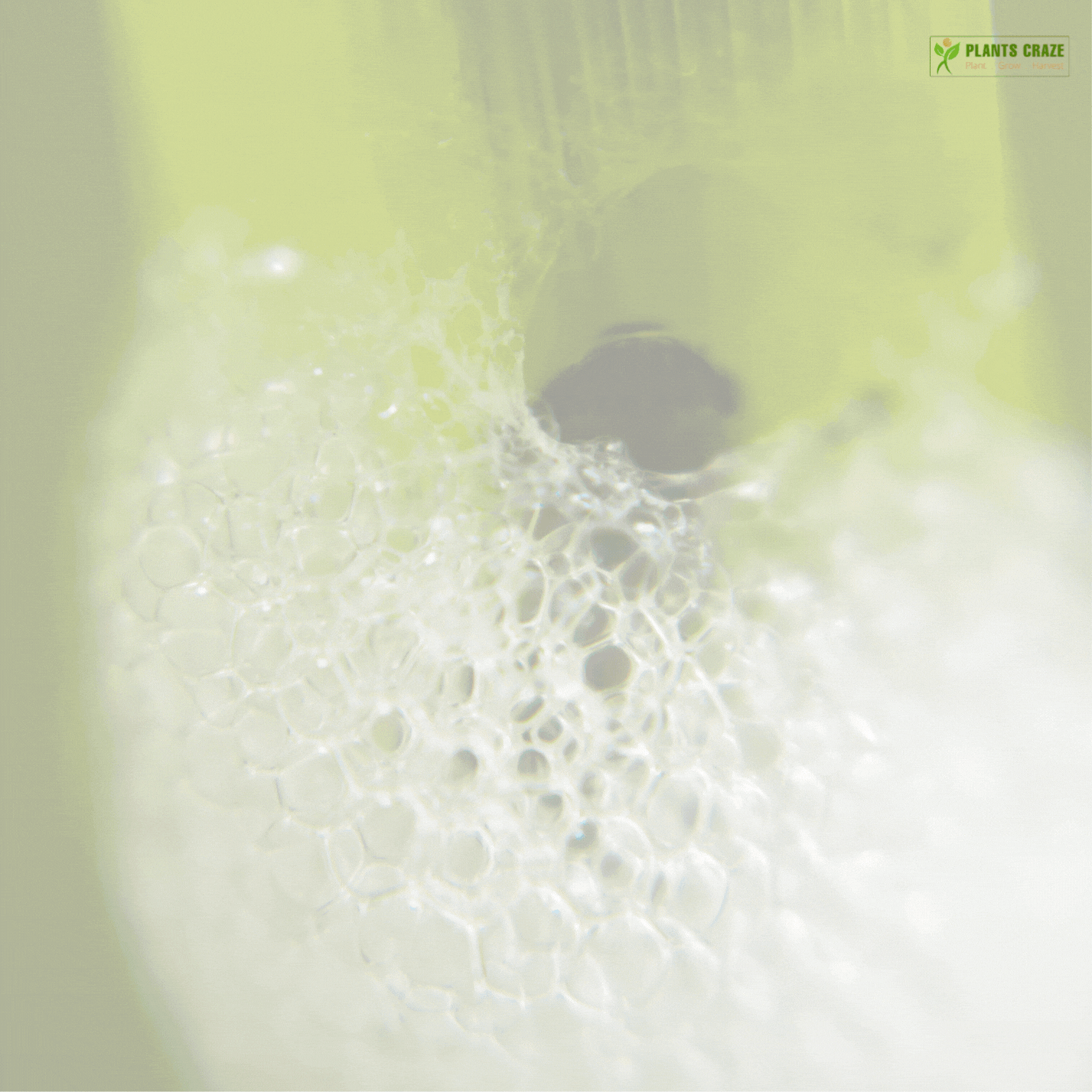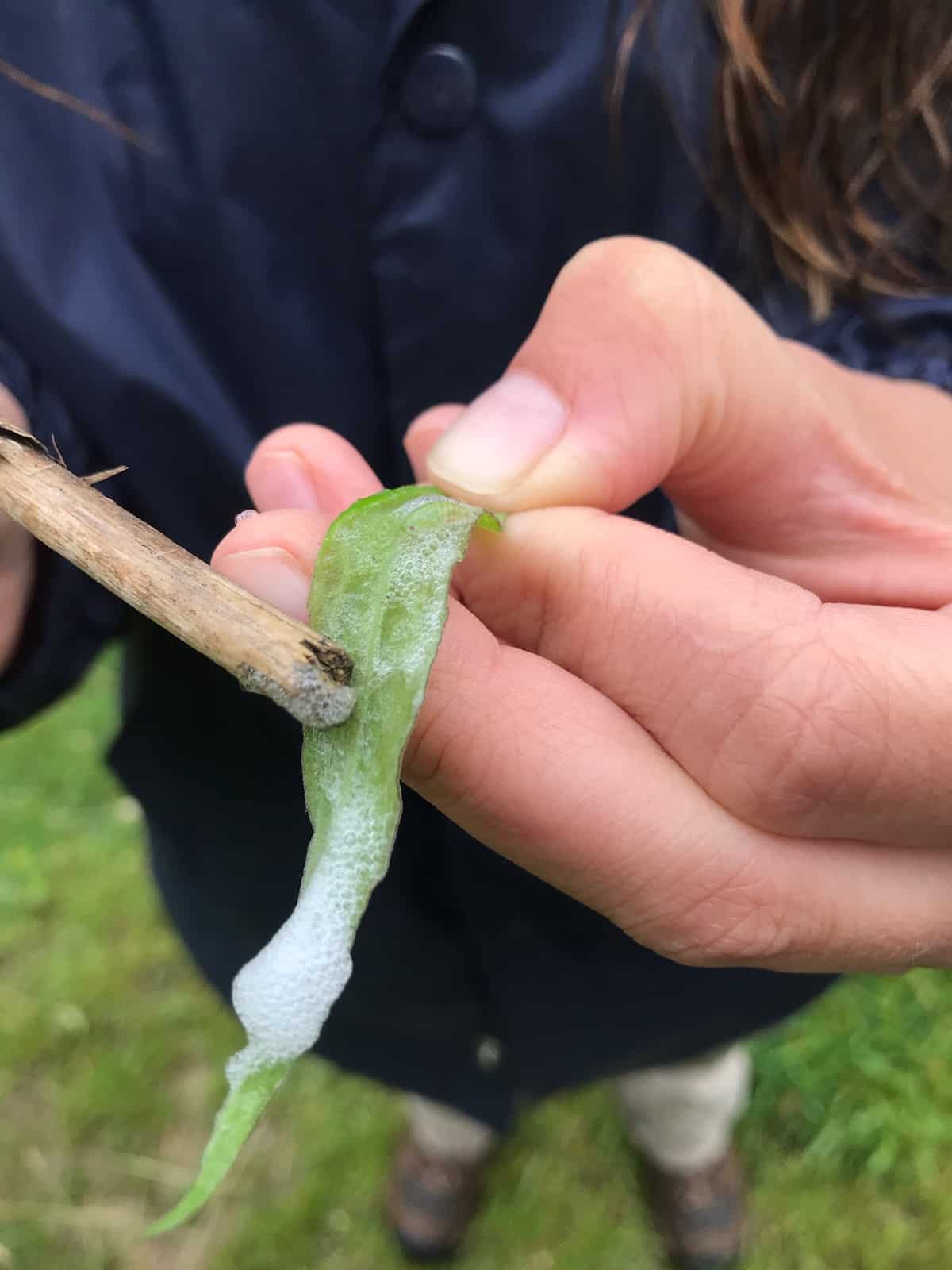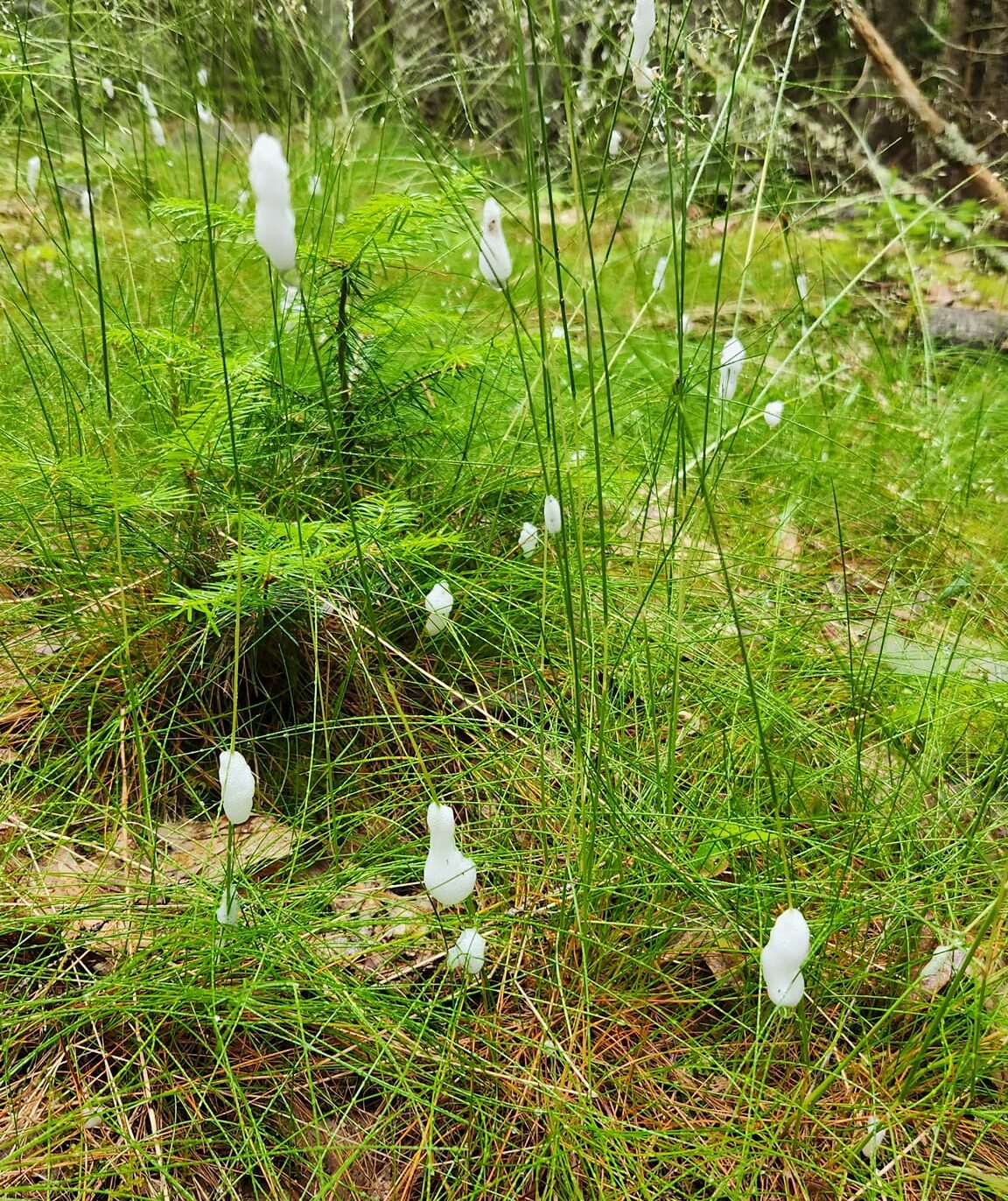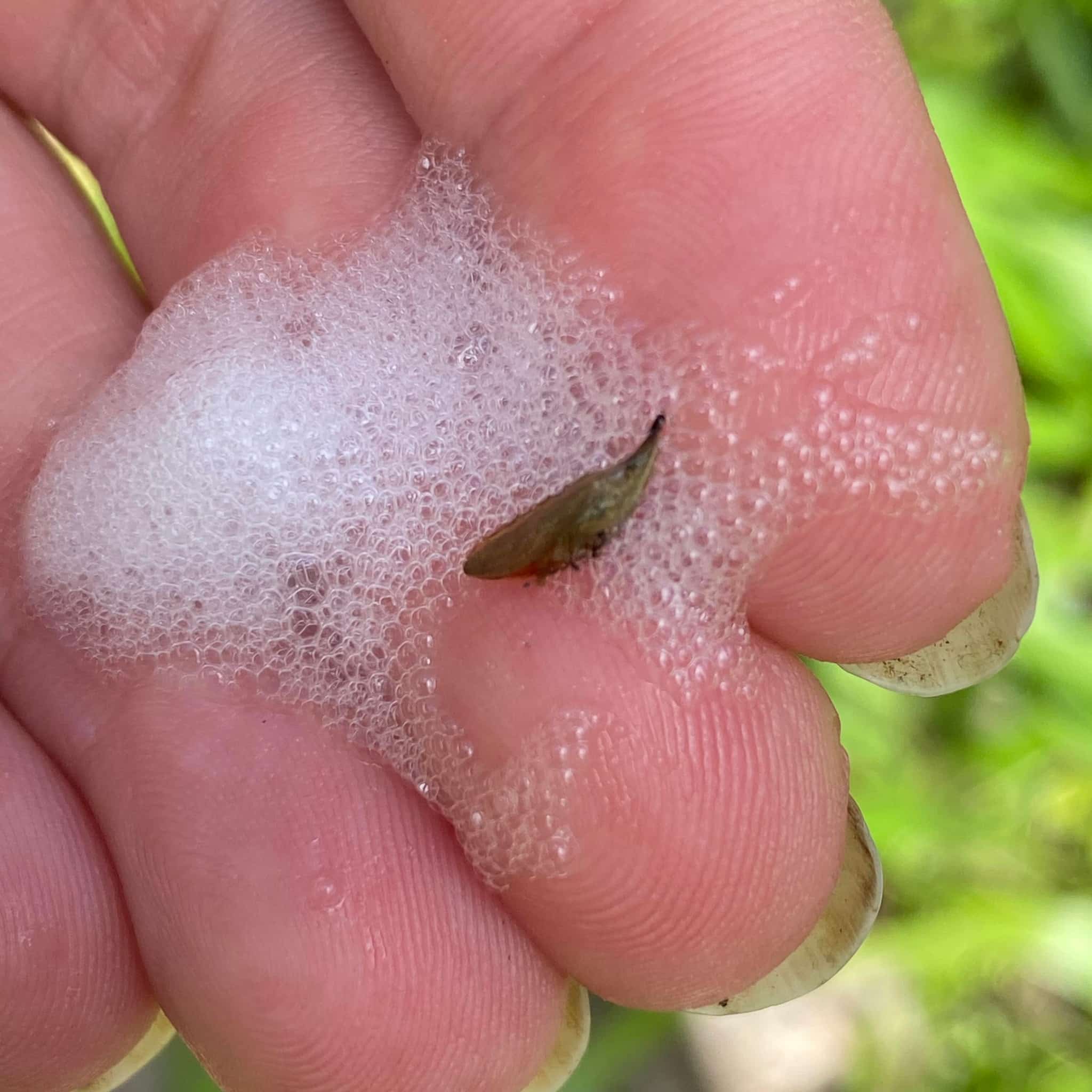While taking an evening or morning stroll in your backyard, you may notice a suspicious foamy substance on plants.
Without a joke, this will be a serious matter for you and your plants later if you don’t do anything about it soon.
Stay tuned if you want to know more about these bugs and get a deeper sense of their control measures!
Table of Contents Show
What Are Spittlebugs?
Spittlebugs or ‘Froghoppers’ belong to the insect family Cercopidae, like Aphids and other true garden bugs.
There are about 23,000 species of Spittlebugs worldwide, but around 30 to 60+ species in North America.
Additionally, these nymphs and mature Spittlebugs have more or less triangular bodies, with oval to pointy heads and strong hind legs for leaping up to 2 feet in the air.

Almost all Spittlebugs inhabit areas near or around Tropical regions (Neotropics, Afrotropical, Indomalayan, and Australia). While some species also thrive in the Arctic (Palearctic and Holarctic).
Due to their stance, morphology, and taxonomical placement, people misunderstand them as Leafhoppers and Treehoppers.
However, Froghoppers have flatter hind legs with 2 determining spurs (thorn-like appendages) and boast a series of black-tipped spines on the outer edge of their tibia (the fourth segment of their legs).
Biology of Spittlebugs [Spittlebug Lifecycle]
Spittlebug species undergo 3 stages in their life cycle: eggs, nymphs, and adults.
Eggs
- Spittlebug eggs are tiny white to golden-yellow, but the color variations depend on the species.
- Females deposit the eggs (using their knife-like ovipositor/ egg-laying organ) in leaf litter, barked branches, or succulent tissues of their hosts from late summer to fall.
- The eggs overwinter inside a frothy mass left by the adult female Spittlebug and hatch during early to mid-spring.

Nymphs
- After hatching, the now mobile nymphs stay and feed inside the froth for 1-3 months.
- Then they move to new hosts, construct fresh foamy substances on plants during their second molting, and conceal themselves.
- Further, the nymphs molt 2-4 times inside the froth, transforming into an adult Spittlebug during late spring or early summer while switching hosts.
- During each molting, they evolve larger, become hungrier, modify their colors and appear more adult-like within 5-8 weeks.
Do You Know?
Adult Spittlebugs live for 3 weeks to 6 months, and the females can start laying eggs 1 week after becoming an adult. However, Spittlebugs can only produce 1-2 generational broods per year. Each female lays single or 100-200 eggs in one sitting.
Adults
- The adult Spittlebugs sport myriad colorings with oval wings and strong, flexible hind legs.
- Hence, the adults can hop, fly, and produce foamy substances on plants, much like the nymphs.
- Male Spittlebugs are slightly smaller than females, but you can distinguish between them from their colorings.
How Do Spittlebugs Feed?
Spittlebug nymphs are more destructive than adults, actively hunting for fresh host plants throughout spring and summer.
As for their feeding habit, both the nymphs and adult Spittlebugs puncture the water and mineral-carrying xylem sap on the stem or leaf petiole of the infected plant.
Then, the nymphs and adults discharge a noticeable foamy substance around themselves from their abdominal breathing tubes and blend some additional ‘chemical substances’ of their own creation to make the excretions thicker.

The bubbles are essential during the juvenile stages as they protect the nymphs from temperature extremes and form a humid casing that saves them from dehydration.
Some Spittlebug species can create about 80 bubbles per minute by shaking their abdomen up, down, back, and forth.
This bacteria blocks the xylem vessels of the host plant, making them weak and droopy, ultimately killing them.
What Plants Do Spittlebugs Attack?
Spittlebug nymphs relish the xylem saps with surplus amino acids. However, adults are not picky feeders.
Therefore, plants like nitrogen-fixing Legumes, Grasses, Roses, Chrysanthemums, Strawberries, Alfalfa, Daisies, Goldenrods, Clovers, Pines, Spruce, and Firs are their prime targets.

Further, the holes left by Spittlebugs serve as an entry point for many harmful bacterial, viral, fungal, and nematode pathogens.
Also, there are diverse Spittlebug species that feed on the xylem sap of numerous plants.
Hence, these bugs can be host specific! Let’s discuss some of them in the table below.
| Spittlebug Species | Affected Plants |
|---|---|
| Meadow Spittlebugs Philaenus spumarius | Weeds, Alfalfa, Strawberries, Grapes, Clover, Grasses, Corns, Legumes & Thistles |
| Pine Spittlebugs Aphrophora parallela | Pine, Fir, Spur & Hemlock |
| Dogwood Spittlebugs Clastoptera proteus | Dogwoods, Blueberries & Vaccinium species |
| Diamondback Spittlebugs Lepyronia quadrangularis | Grasses, Trees, Broad-leaf Herbs & Brambles |
| Two-lined Spittlebugs Prosapia bicincta | Turf Grasses, Hollys, Asters & Morning Glories |
| Sunflower Spittlebugs Clastoptera xanthocephala | Sunflowers, Ragweeds, Grasses, Shrubs & Trees |
| Alder Spittlebugs Clastoptera obtusa | Speckled Alder, Grey Birch, Common Witch-Hazel, American Hop, Basswood, Horse Chestnut, Paw Paw & Hornbeam |
| Boreal Spittlebugs Aphrophora gelida | Douglas Firs, Tamarack, Spruce, Pine, Fireweed, Goldenrod & Grapes |
| Four-spotted Spittlebugs Aphrophora quadrinotata | Grapes, Grasses, Oak, Poplar & Speckled Alder |
How To Control Spittlebugs?
Spittlebug nymphs and adults are the most active during spring and summer.
Hence, continuously monitor for these foamy substances on plants and eliminate them during their peak prospering seasons.
- Inspect for the foamy substances on the plant leaves, stems, and around the plant’s base.
- Use a strong blast of hose water to dislodge the frothy mass and Spittlebug nymphs from your plants.

- Prepare a soapy water solution to spray on the bugs for 1-2 weeks until the infestation fades away.
- Remove weeds from around your plants to cut off the food source of Spittlebugs.
Fact!
Even harmful invasive plant species, such as Parthenium hysterophorus, are unsafe from Spittlebugs. However, in this case, Spittlebugs may effectively annihilate invasive species that can seriously threaten the ecosystem and other native plants.
- You can also hand-pick and squash the bugs to eliminate them.
- Employ predatory insects (Assasin Bugs, Minute Pirate Bugs, Fire Ants, Beetles, Syrphid Larvae, Harvestmen, Spiders & Parasitic Wasps) and birds that feed on the Spittlebugs.
- Try applying Bifenthrin insecticide on the bugs as per the pack instructions to discard them from the plants.
- Additionally, spray neem oil on your precious plants to keep these bugs at bay.
From Editorial Team
Conclusion!
Once you see the foamy substance on the plants, immediately take precautions and remove the bugs hidden inside before they kill your plants.
If the infestation is severe, use insecticides to discourage the foamy substance on plants. However, don’t use it excessively to impair valuable pollinators.
